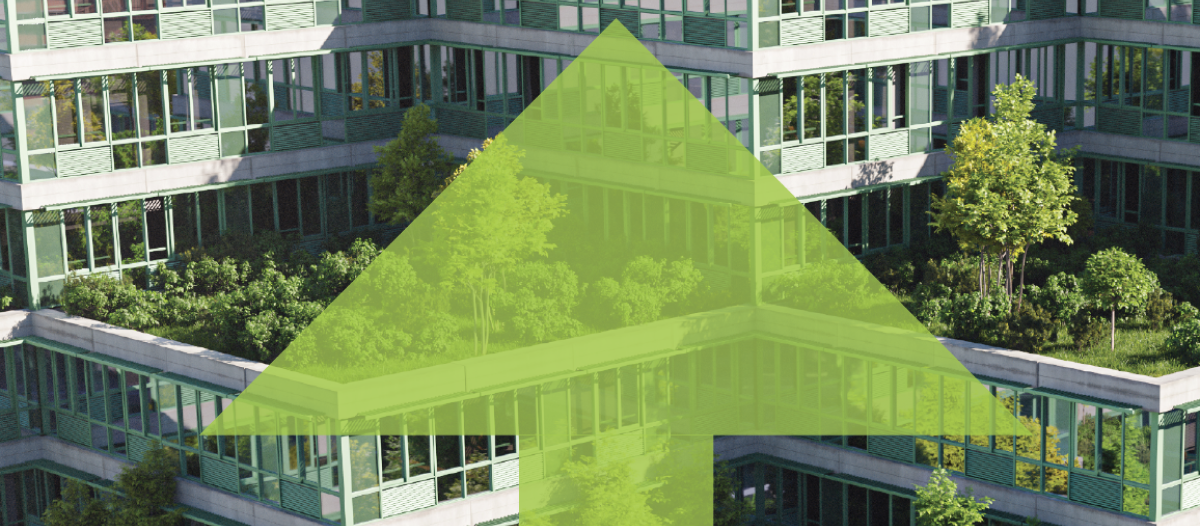Taking Aim
Using PropTech to hit net zero targets

Net zero targets have placed pressure on all industries over the past few years, but never more so than in the months following COP26. Although climate scientists warn that the impacts of global warming are close to being irreversible, there is hope for the future if industry professionals put their trust into emerging technologies, such as PropTech.
In the U.K., the built environment is responsible for around 40 percent of emissions – which is not a heartening statistic. But thanks to new developments and innovations in PropTech, buildings have a chance of becoming ever more sustainable and could be a key contributor to helping countries worldwide meet their net zero targets.
However, the construction sector, which makes up a crucial component of the built environment’s carbon output, must also make changes to its process. Construction is responsible for up to 11 percent of global carbon emissions, but if the industry looks toward PropTech companies operating within their space and embraces new, developing technologies, it could harness valuable data to help deliver more sustainable buildings globally.
What leading global institutions are doing to help
In 2015, the United Nations unveiled its 17 Sustainable Development Goals, which aim to create a blueprint to achieve a better and more sustainable future for all. For the built environment, relevant goals include addressing challenges and providing solutions for affordable, clean energy, climate action, and sustainable cities and communities.
In addition, the EU’s Energy Efficiency Directive sets out how the union will achieve its 2030 energy efficiency targets and reduce greenhouse gas emissions by at least 55 percent when compared to 1990. This extends to buildings, industry and transportation. For buildings, this includes implementing national long-term renovation strategies for the building stock in all EU countries and making it mandatory for energy efficiency certificates to be issued during the sale and rental of buildings. Also, in a bid to increase efforts, the European Commission proposed a new directive as part of the Delivering on the European Green Deal package.
These two examples show that global institutions are interested in future-proofing techniques, but it can be harder to implement these policies for all businesses and buildings.
How the built environment can help to achieve net zero
In the EU, the construction sector is responsible for more than 35 percent of waste generation. This does not sound like a promising statistic when it comes to achieving net zero targets, but the European Union has recently undertaken a huge effort to renovate buildings and reduce embodied carbon as it works toward its legally binding objective to meet net zero carbon by 2050. Commitments like this could see PropTech lead the way as Europe works toward its sustainability targets.
Embodied carbon from materials alone can make up more than half of a building’s total lifetime emissions. PropTech solutions extend to embodied carbon, helping organizations measure the impact of a project before it becomes operational. In addition, paying close attention to the supply chain will be the first step for property developers as they adapt to new regulations. In the future, this may be a deciding factor for who they choose to work with.
As such, the future sustainable built environment will also require a new range of building materials including steel, glass and timber, which all have a lower lifetime emission rate than concrete.
In short, more sustainably built buildings that are developed with lifetime carbon emissions in mind could lead to the reduction of waste, carbon emissions and carbon usage.
The performance gap, which is defined as the disparity between the anticipated energy efficiency of a building during its design phase to its actual efficiency when it is operational, is a worldwide problem that needs to be addressed. With energy costs rising across the globe, this is a problem that many facility managers will want to solve now.
As a result, one of the easiest ways for this highly polluting industry to understand needed changes is looking closely at new energy and carbon data generated by PropTech companies.
How PropTech is revolutionizing the industry
Raw materials and the potential for pollution during the construction process are issues this industry is already addressing. However, one of the most important aspects of the built environment’s move to net zero carbon is understanding and harnessing new and existing technologies that measure the embodied carbon of materials and monitoring the operational carbon emissions during the property’s in-use phase.
PropTech innovations that allow FMs to track and analyze a building’s operational data can help solve some simple carbon issues during a building’s life cycle. For example, managing temperature, spotting and fixing faults, and responding to energy usage needs (such as matching the usage to the occupancy of buildings and its priorities) can help the built environment use less energy, and optimize what building teams use.
This does not just help existing buildings perform better but can increase the capabilities of the future built environment. Developers can use this existing data to make informed decisions when designing new properties, helping them understand how a building’s carbon output can be optimized from the very start of its life cycle. This can, in turn, begin to guide industry standards and regulations that can influence the amount of carbon a building will use during construction and operation, which will help toward net zero targets.
As with the data itself, smart buildings can use additional technologies, like digital twins and other AI tools, to give real-time insights into space usage, water consumption, energy usage and more. Though it sounds like a big technical undertaking, FMs willing to learn and adapt to these tools will ensure that current and future buildings can run more sustainably. In addition, adopting PropTech for building management can also help teams to hold on to clients by running more efficient buildings.
The good news is that global investment in PropTech grew to US$7.1 billion in 2021, showing a positive trend in the wider support for a more sustainable built environment. However, this is still significantly down from US$13.9 billion in 2019, showing that despite the rise, investment has dipped in light of the pandemic. Now is the time to increase support for these solutions before it is too late.
Finding new ways for the U.K. & EU to achieve net zero targets
Beyond its capabilities to help the region deliver on their net zero targets, one of the best things about PropTech for the built environment is its adaptability. Fitting new buildings – and retrofitting old ones – with green technologies that monitor energy usage, facilities and faults are recommended to help those responsible for a building’s carbon emissions understand and control the areas contributing to the greatest output.
It is more efficient and cheaper to retrofit technology into an older building than it would be to demolish and rebuild it with green materials. It is predicted by the U.K. Green Building Council that around 80 percent of buildings that will exist in 2050, when the net zero target should be met, already exist. Fitting them with the technology to help them run more smartly and sustainably is much quicker and easier than building thousands of new green properties in just 28 years.
Recently, property company Grosvenor announced that it would make retrofitting a priority in their London portfolio, with the organization’s U.K. team planning to invest £90m by 2030 in retrofitting to help reduce operational costs and emissions across their properties. In addition, the organization has brought forward their targets for reaching carbon neutrality by five years to 2030, achievable through carbon offsetting and increasing their use of renewable energy.
Keeping up the sustainable design process
The U.K. and wider Europe’s drive to meet its carbon emission targets by 2050 needs to be acted on, fast. If the construction and property sectors ignore PropTech companies that could support them with developing and running greener buildings, they will be at risk of missing their targets. The World Green Building Council reports the built environment is expected to double its total footprint by 2060 – the result of not harnessing data or investing in new sustainable solutions.
PropTech can influence the way new buildings are designed and built using data from existing properties and can help reduce the emissions of a building once it is operational. It can also help retain tenants who are working toward more sustainable targets; but can it lead to a holistically green process, from design to operation?
If construction companies are open to adopting these principles from day one and understanding the power that their data can have, the region can deliver on their net zero targets to help provide a better future for all.

Mike Darby is a leading expert in building services engineering and has worked in the field for more than 20 years. He has designed and delivered controls systems for multi-million pound installations, including major banks, covering business-critical systems.
References
raeng.org.uk/news/news-releases/2021/september/construction-sector-must-move-further-and-faster-
un.org/sustainabledevelopment/sustainable-development-goals/
ec.europa.eu/growth/industry/sustainability/buildings-and-construction_en
hansard.parliament.uk/Commons/2022-02-02/debates/867CCDAD-4F8F-43FC-B811-F9476B3962A7/CarbonEmissions%28Buildings%29
Read more on Sustainability and Real Estate or related topics Real Estate Management , Sustainable Facility and Facility Technology
Explore All FMJ Topics









